Protecting Our Waterways: What You Should Know About Harmful Algal Blooms
Taylor Breton ·Imagine spending the day at the lake early in the summer, the water is crystal clear and you can see different types of fish swim by you. It’s a tranquil, picturesque afternoon. Later in the summer, you revisit the lake. It is now covered in slimy mats of algae and the water is so murky that you are unable to see any fish. This phenomenon that you are imagining is known as a Harmful Algal Bloom.
What is a Harmful Algal Bloom?
Harmful Algal Blooms (HABs) occur when colonies of algae grow out of control and produce toxins that can affect humans, wildlife, and the environment.
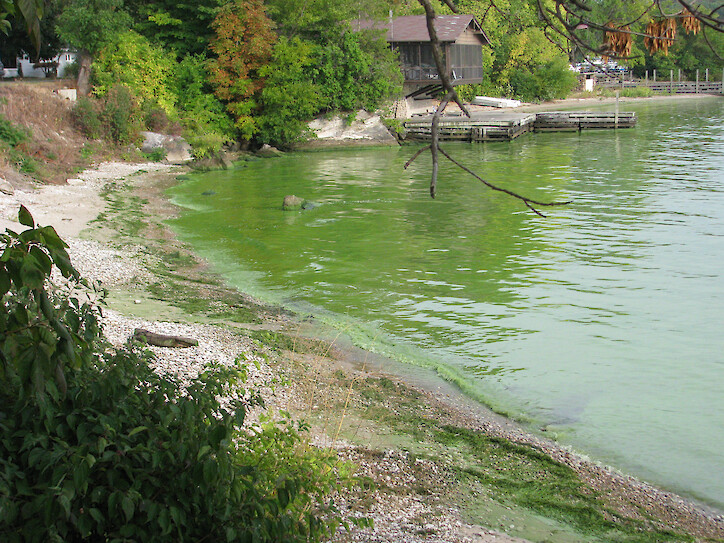
What causes HABs to form?
HABs can form in both freshwater and marine environments. Cyanobacteria, photosynthetic blue-green algae, is primarily responsible for freshwater HABs. Dinoflagellates, diatoms, and different types of phytoplankton are the most common marine and brackish water HAB-producing species.
Physical and chemical factors contribute to the formation of HABs in both freshwater and marine environments. Factors include nitrogen and phosphorus loading, light availability, water flow, salinity, and vertical mixing.
Interactions between these factors can lead to large temporal changes in levels of harmful algae and toxin production.
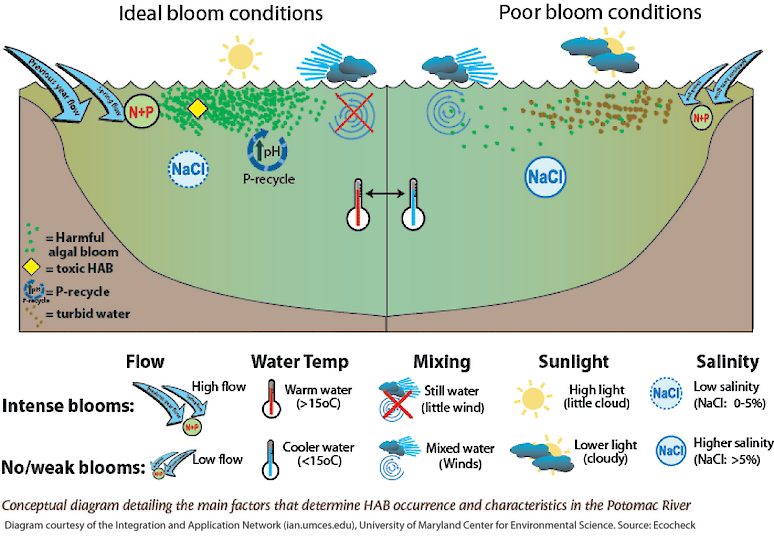
What makes HABs so dangerous?
In October, Dr. Judy O’Neil, Associate Professor at the UMCES Horn Point Lab, spoke to our community and coastal health class about harmful algal blooms in the coastal zone.
Dr. O’Neil discussed several factors that make HABs so harmful. HABs produce toxins that can lead to fish kills, shellfish poisoning, and vectored toxicity. They may disrupt food webs leading to poor food quality, sheer biomass, and the inability for grazers to ingest or find nutrition. Water discoloration and light attenuation caused by HABs may lead to SAV die-offs. Low dissolved oxygen levels may lead to anoxia or hypoxia ultimately leading to non-discriminating kills.
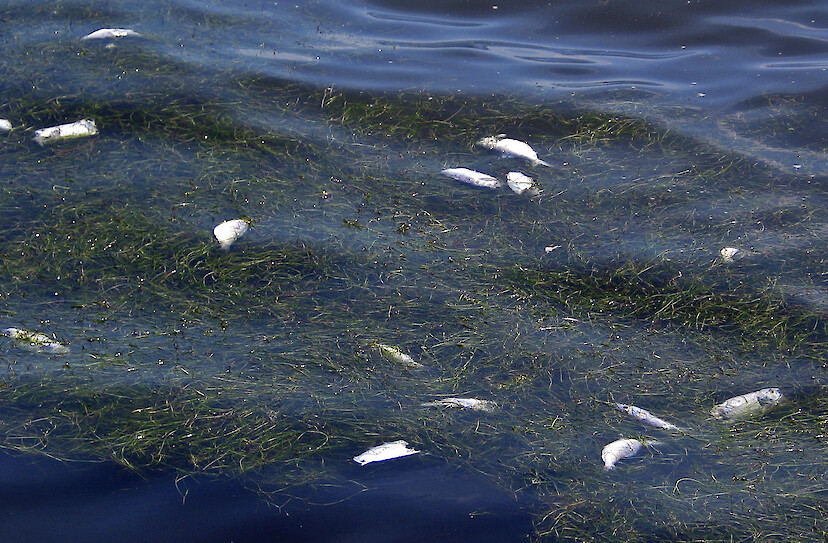
Impacts of HABs on the Environment
High biomass algal blooms can lead to low oxygen levels (hypoxia) or even anoxia of the affected waterway. Hypoxic and anoxic conditions are often associated with an increase in acidity. The lack of oxygen has negative effects on the fish and other aquatic species.
HABs can block sunlight needed by submerged aquatic vegetation for growth and survival. The disruption of SAV may also have negative bottom-up effects on the aquatic food web.
HABs are typically fueled by excess phosphorus and nitrogen nutrients that can come from agriculture, air deposition, septic systems, sewage treatments, and runoff water sources.
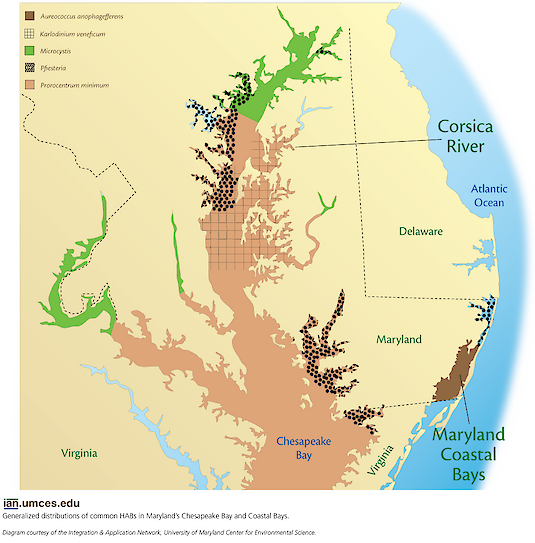
Impacts of HABs on Community Health
Several human poisoning syndromes are associated with the consumption of mollusks, crustaceans, fish, and other marine animals that have accumulated algal toxins.
Paralytic Shellfish Poisoning (PSP) is a potentially fatal illness that is caused by consuming shellfish that is contaminated by algal toxins. Symptoms may vary depending on the individual and levels of toxin ingested.
PSP is spread by dinoflagellate species, Alexandrium tamarense and Pyrodimium bahamas, that are known to produce the toxin called Saxitoxin.

How people may become affected by PSP Graphic. Source: Food Safety News.
Susquehanna Flats Case Study
Dr. O’Neil discussed a case study she has worked on in the Susquehanna Flats looking at the effects Lyngbya may have on the submerged aquatic vegetation in the area.
Lyngbya is a benthic unicellular autotroph. It is a part of the cyanobacteria genus and can produce toxic filaments. It often resembles hair or muck on the bottom of the sediment. It may form dense, dark mats, and its toxins may cause skin irritations and rashes.
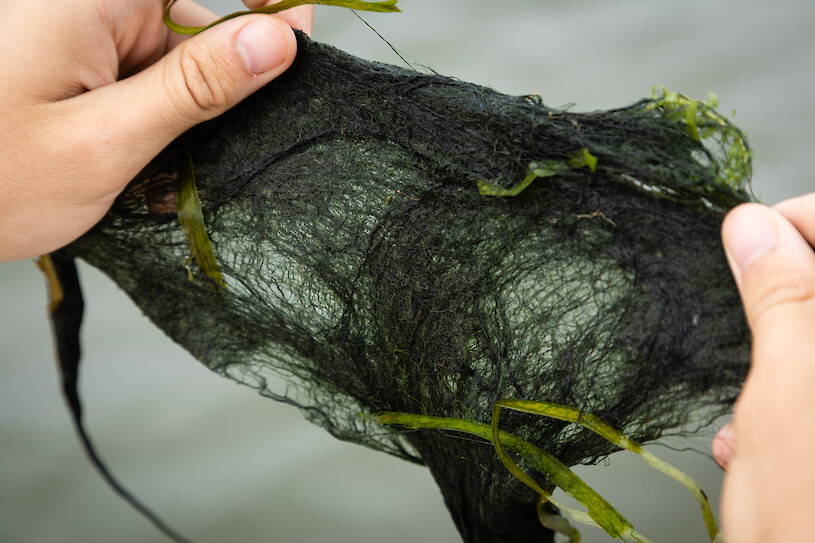
Lyngbya intertwined with submerged aquatic vegetation. “Harmful algal blooms in Harford County, Md.” by The Chesapeake Bay Program from Flickr is licensed under CC BY-NC 2.0.
The Susquehanna Flats are located in the upper Chesapeake Bay where the mouth of the Susquehanna River meets the Bay. The Flats are home to the largest and most diverse bed of submerged aquatic vegetation in the Chesapeake.
The goal of this project is to better understand the causes and effects of Lyngbya abundance and their impact on SAV resilience at Susquehanna Flats. A three-pronged approach of field surveys, laboratory experiments, and ecosystem simulation modeling was employed for this project.

Maps were generated to compare the cover class of SAV beds and Lyngyba in Susquehanna Flats. Findings showed a lower center of nitrogen of the SAV beds and higher Lyngbya coverage.
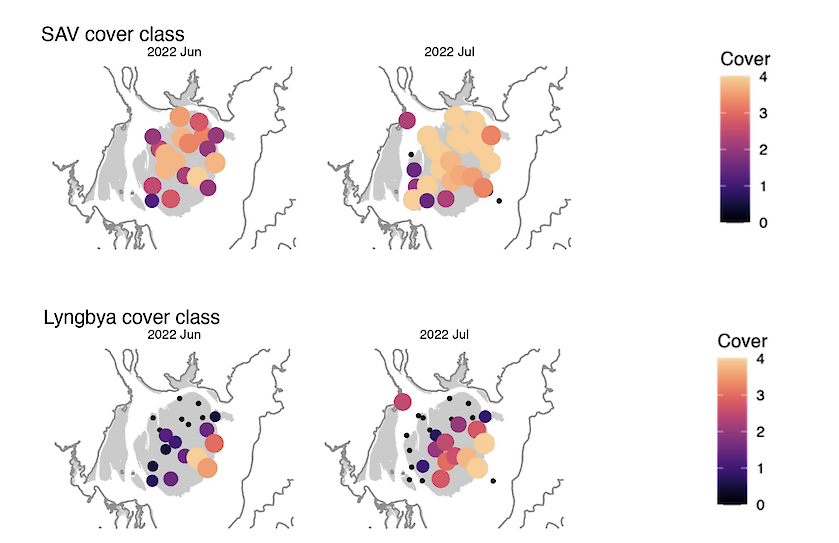
Maps comparing SAV and Lyngbya Cover at Susquehanna Flats. Source: Dr. Judy O’Neil.
Imagine being able to return to a crystal clear lake, free from harmful algal blooms. By understanding harmful algal blooms and what leads to their occurrence, we can take action and work towards restoring our waterways.
References:
- Anderson, D. M., Fensin, E., Gobler, C. J., Hoeglund, A. E., Hubbard, K. A., Kulis, D. M., Landsberg, J. H., Lefebvre, K. A., Provoost, P., Richlen, M. L., Smith, J. L., Solow, A. R., & Trainer, V. L. (2021). Marine harmful algal blooms (HABs) in the United States: History, current status and future trends. Harmful algae, 102, 101975. https://doi.org/10.1016/j.hal.2021.101975
- Harmful Algal Blooms (HABs) in Water Bodies. (n.d.). Environmental Protection Agency. https://www.epa.gov/habs
- Lyngbya. (n.d.). Coosa Riverkeeper. https://coosariver.org/lyngbya/
- News Desk. (2017, Aug 26). Paralytic Shellfish Poison Levels Force Recreational Harvest Ban. Food Safety News. https://www.foodsafetynews.com/2017/08/paralytic-shellfish-poison-levels-force-recreational-harvest-ban/
- O’Neil, Judy. (2024, October 2). Harmful Algal Blooms in the Coastal Zone. University of Maryland Center of Environmental Sciences.
- Paralytic Shellfish Poisoning (PSP). (n.d.) Washington State Department of Health. https://doh.wa.gov/community-and-environment/shellfish/recreational-shellfish/illnesses/biotoxins/paralytic-shellfish-poisoning
- What is a Harmful Algal Bloom?. National Oceanic and Atmospheric Administration. (n.d.). https://www.noaa.gov/what-is-harmful-algal-bloom
About the author
Taylor Breton

Taylor is a first-year Master's student at the UMCES Appalachian Lab. Her research focuses on the restoration of Vallisneria americana in the Hudson River. When she is not out in the field or working on her research in the greenhouse, she enjoys crocheting and spending time outdoors.
Next Post > We eat from where we dump
Comments
-
Alison Novara 1 year ago
Taylor, great blog! I particularly liked how you broke the issue of HABs down into readable, easily-digestible sections. I feel like your imagery at the beginning will really help the general public to understand what HABs are, and the way you ended the blog by alluding back to this imagery really helped tie it all together! I feel that you seamlessly tied in Dr. O'Neil's talk and case study. Great pictures and diagrams as well!
-
Loni Matthew 1 year ago
As climate change progresses, it is easy to imagine how these algal blooms will continue to increase in intensity! It's so interesting how animals who are exposed to HABs are not able to adapt in a way that protects them from it. It goes to show how toxic they are, and how they have the potential to disrupt various ecologies and ecosystems. Shallower waters like that of the Chesapeake can probably serve as an example of what is to come as waters continue to increase in temperature globally. By then, the water conditions in the Chesapeake and other bays in the US would be very poor. Studies like these help us understand a growing problem that has the potential to be addressed.
-
Jun Suk Byun 1 year ago
Neat blog Taylor. I could easily feel the gravity of the HAB issues when you took examples from the Chesapeake Bay. I felt that the way you presented the topic was something that the general audience from non-scientific background could also assimilate. Nice graphics!
-
Ronita 1 year ago
I loved the pictures, it is a very well-written blog!
-
Anikka 1 year ago
Delightful read on something so harmful! Taylor, your use of imagery and storytelling really works well in this blog. As well as, the clear and concise summary of the Susquehanna flats research on HAB's. It will be interesting to see how the levels of HAB's fluxes as the knowledge develops and nutrient management practices advance in response to climate changes.
-
Adetutu Adebayo 1 year ago
Thank you, Taylor. There is a need to stop the activities, such as: the release of chemicals in the water bodies, and others that lead to harmful algae bloom. The organisms in the water feed on these harmful algae, humans in turn feed on the organisms. We would do ourselves better if this issue is promptly addressed.
-
Ian Kalama 1 year ago
The blog does an excellent job of highlighting the impacts of Harmful Algal Blooms (HABs) on both ecosystems and human health, while weaving in a compelling narrative that connects scientific concepts with real-world implications. By using vivid imagery, detailed case studies like the Susquehanna Flats, and actionable insights, you underscored the urgent need for preventative measures and collaborative efforts to restore and protect our waterways from these destructive blooms. Great work!

